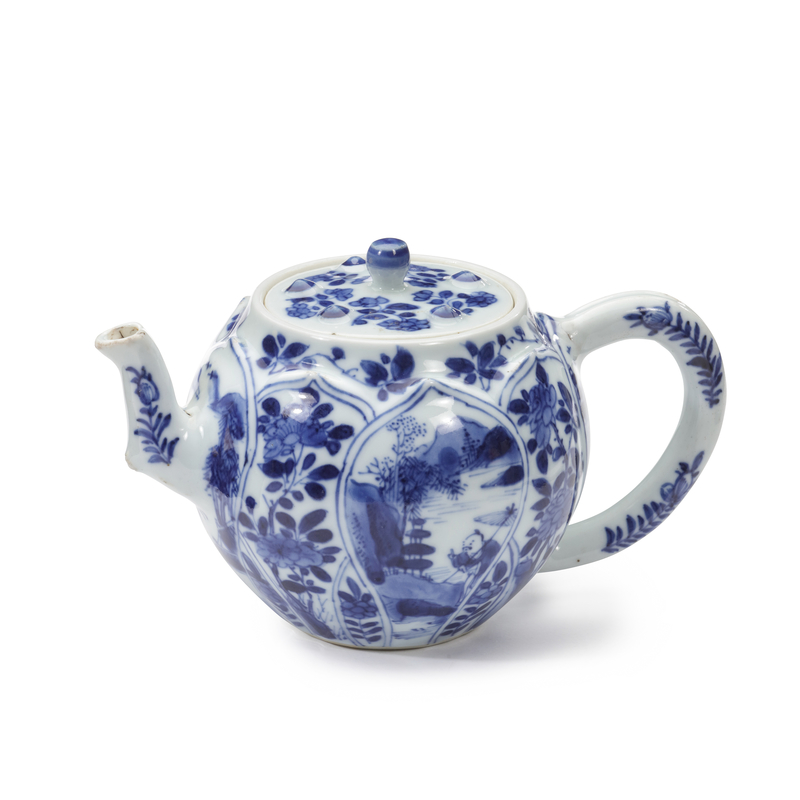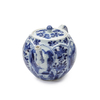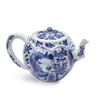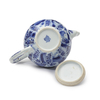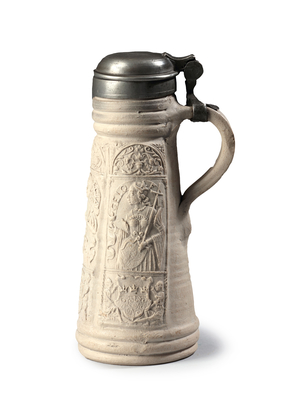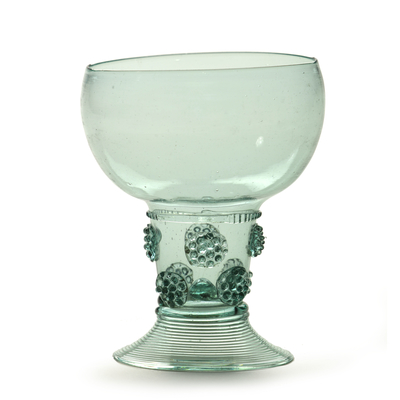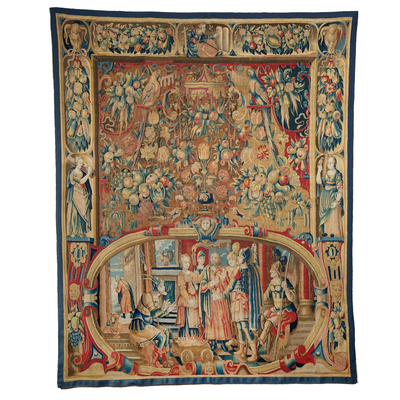Blue and white lotus-shaped teapot
Global shipping available
- Origin
- China
- Period
- Kangxi Period, 1662 - 1722
- Material
- Porcelain
- Height
- 9.7 cm
- Depth
- 15.5 cm
Questions about this object?
Please use one of the contact options below:
Description
This lotus-shaped teapot has eight double rimmed petals alternating with floral and landscape scenes. The landscape scenes show rocky landscapes with water, houses and in two scenes a person. The cover is shaped like a lotus bud and decorated with floral motives. The handle and spout of the teapot have similar flowers on both sides. The bottom of the teapot is marked with an artemisia leaf.
The lotus is a special flower in Buddhist symbolism; it represents purity of the body, mind and speech, as if floating above the murky waters of material attachment and physical desire. According to legend, Buddha’s first steps made lotus flowers appear everywhere he walked.
Tea has been playing an important part in Chinese culture and rituals for more than 2000 years. Recent discoveries proved that tea was used as an imperial beverage in the early Han dynasty, 2nd century BC. In the centuries that followed, tea became more and more available for the whole population, and during the Tang dynasty (618 - 907), under influence of Buddhism, drinking tea became an important part of everyday life. At first, tea was mostly prepared from compressed bricks of powdered tea. Over time, this evolved into the use of loose tea leaves which made teapots for steeping necessary. The Chinese tea, and porcelain teawares, turned out to be popular export products and in high demand in both Japan and Europe during the Qing dynasty.
